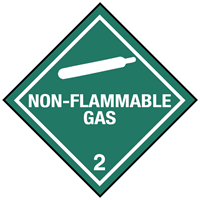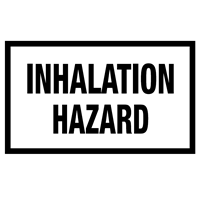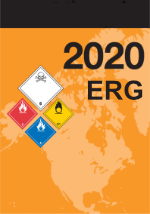UN/NA 3318





 Print
Print
UN/NA 3318 |




|
![]() The ERG recommendations are developed for use during the
initial phase of transportation incidents;
they are not intended for spills at facilities.
The ERG recommendations are developed for use during the
initial phase of transportation incidents;
they are not intended for spills at facilities.
Material Names
|

|
|
| Name of Material | Small Spills (from a small package or small leak) |
Large Spills (from a large package or many small packages) |
||||
|---|---|---|---|---|---|---|
|
First Isolate in all Directions |
Then Protect Downwind |
First Isolate in all Directions |
Then Protect Downwind | |||
| Day | Night | Day | Night | |||
| Ammonia solution, with more than 50% ammonia | 100 ft | 0.1 mi | 0.1 mi | 500 ft | 0.5 mi | 1.3 mi |
The ERG doesn't predict that large amounts of toxic-by-inhalation gases will be produced if this material is spilled in water.
| UN/NA | Proper Shipping Name | Hazard Class | Labels | Notes* |
|---|---|---|---|---|
|
* There are three notes: (1) whether the displayed information is for domestic (U.S.) or international shipping (if neither is specifically indicated, it applies to both), (2) whether the proper shipping name must include one or more technical names of the hazardous material in parentheses, and (3) whether the hazardous material is an inhalation hazard. |
||||
| UN | Ammonia solution, relative density less than 0.880 at 15 degrees C in water, with more than 50 percent ammonia | 2.2 | 2.2 | Domestic (U.S.), Inhalation Hazard (Special Provision 13) |
| UN | Ammonia solution, relative density less than 0.880 at 15 degrees C in water, with more than 50 percent ammonia | 2.3 | 2.3, 8 | International, Inhalation Hazard Zone D |
 2.2 - Non-flammable, non-poisonous gas
2.2 - Non-flammable, non-poisonous gas
 2.3 - Poisonous gas
2.3 - Poisonous gas
 8 - Corrosive
8 - Corrosive
 Inhalation Hazard (Special Provision 13)
Inhalation Hazard (Special Provision 13)